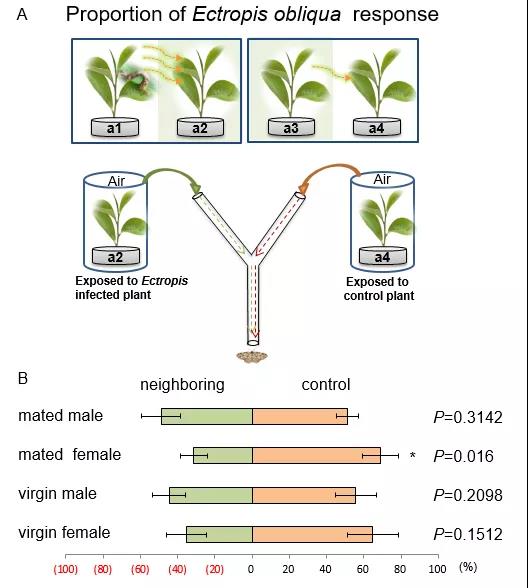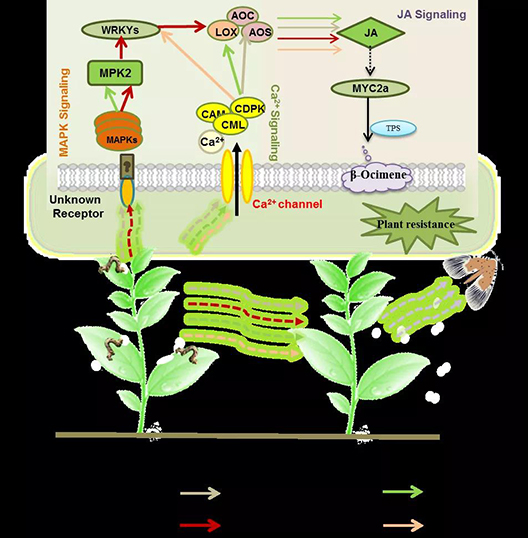Recently, the research group of Professor Song Chuankui of the State Key Laboratory of Tea Biology and Resource Utilization of Anhui Agricultural University and the research group of Researcher Sun Xiaoling of the Tea Research Institute of the Chinese Academy of Agricultural Sciences jointly published the title “Plant, Cell & Environment (Impact Factor 7.228)” Herbivore-induced volatiles influence moth preference by increasing the β-Ocimene emission of neighbouring tea plants”, the study found that the volatiles induced by the feeding of tea looper larvae can stimulate the release of β-ocimene from neighboring tea plants, thereby increasing the neighboring tea plants. The ability of healthy tea trees to repel adults of the tea looper. This research will help to understand the ecological functions of plant volatiles and expand new understanding of the volatiles-mediated signal communication mechanism between plants.
In the long-term co-evolution, plants have formed a variety of defense strategies with pests. When being eaten by herbivorous insects, plants will release a variety of volatile compounds, which not only play a direct or indirect defense role, but also participate in direct communication between plants and plants as chemical signals, activating the defense response of neighboring plants. Although there have been many reports on the interaction between volatile substances and pests, the role of volatile substances in signal communication between plants and the mechanism by which they stimulate resistance are still unclear.
In this study, the research team found that when tea plants are fed by tea looper larvae, they release a variety of volatile substances. These substances can improve the repellent ability of neighboring plants against tea looper adults (especially the females after mating). Through further qualitative and quantitative analysis of the volatiles released from nearby healthy tea plants, combined with the behavior analysis of the adult tea looper, it was found that β-ocilerene played an important role in it. The results showed that the tea plant released (cis)- 3-hexenol, linalool, α-farnesene and terpene homologue DMNT can stimulate the release of β-ocimene from nearby plants. The research team continued through key pathway inhibition experiments, combined with specific volatile exposure experiments, and found that the volatiles released by the larvae can stimulate the release of β-ocimene from nearby healthy tea trees through the Ca2+ and JA signaling pathways. The study revealed a new mechanism of volatile-mediated signal communication between plants, which has important reference value for the development of green tea pest control and new crop pest control strategies.
Post time: Sep-02-2021


